Robert Speer
Luminoso at SemEval-2018 Task 10: Distinguishing Attributes Using Text Corpora and Relational Knowledge
Jun 05, 2018


Abstract:Luminoso participated in the SemEval 2018 task on "Capturing Discriminative Attributes" with a system based on ConceptNet, an open knowledge graph focused on general knowledge. In this paper, we describe how we trained a linear classifier on a small number of semantically-informed features to achieve an $F_1$ score of 0.7368 on the task, close to the task's high score of 0.75.
ConceptNet at SemEval-2017 Task 2: Extending Word Embeddings with Multilingual Relational Knowledge
Apr 11, 2017
Abstract:This paper describes Luminoso's participation in SemEval 2017 Task 2, "Multilingual and Cross-lingual Semantic Word Similarity", with a system based on ConceptNet. ConceptNet is an open, multilingual knowledge graph that focuses on general knowledge that relates the meanings of words and phrases. Our submission to SemEval was an update of previous work that builds high-quality, multilingual word embeddings from a combination of ConceptNet and distributional semantics. Our system took first place in both subtasks. It ranked first in 4 out of 5 of the separate languages, and also ranked first in all 10 of the cross-lingual language pairs.
ConceptNet 5.5: An Open Multilingual Graph of General Knowledge
Dec 12, 2016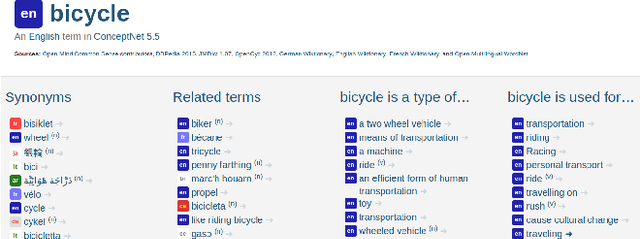
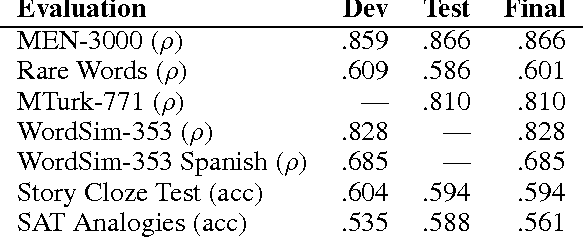

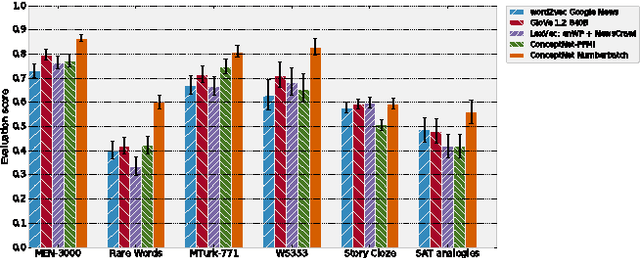
Abstract:Machine learning about language can be improved by supplying it with specific knowledge and sources of external information. We present here a new version of the linked open data resource ConceptNet that is particularly well suited to be used with modern NLP techniques such as word embeddings. ConceptNet is a knowledge graph that connects words and phrases of natural language with labeled edges. Its knowledge is collected from many sources that include expert-created resources, crowd-sourcing, and games with a purpose. It is designed to represent the general knowledge involved in understanding language, improving natural language applications by allowing the application to better understand the meanings behind the words people use. When ConceptNet is combined with word embeddings acquired from distributional semantics (such as word2vec), it provides applications with understanding that they would not acquire from distributional semantics alone, nor from narrower resources such as WordNet or DBPedia. We demonstrate this with state-of-the-art results on intrinsic evaluations of word relatedness that translate into improvements on applications of word vectors, including solving SAT-style analogies.
An Ensemble Method to Produce High-Quality Word Embeddings
Apr 06, 2016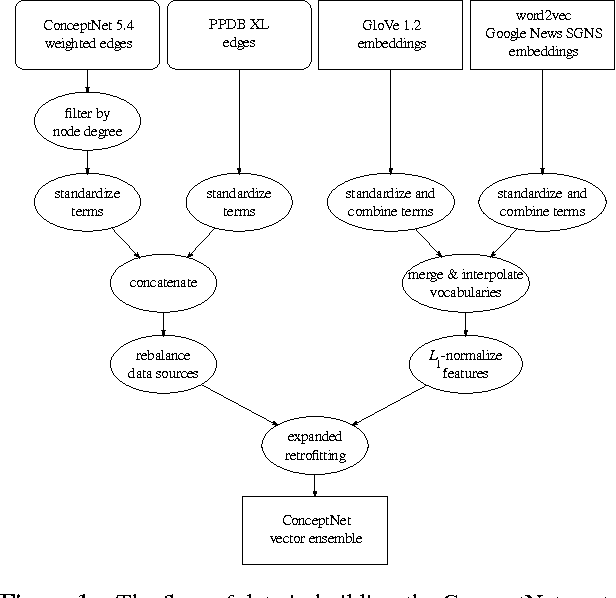
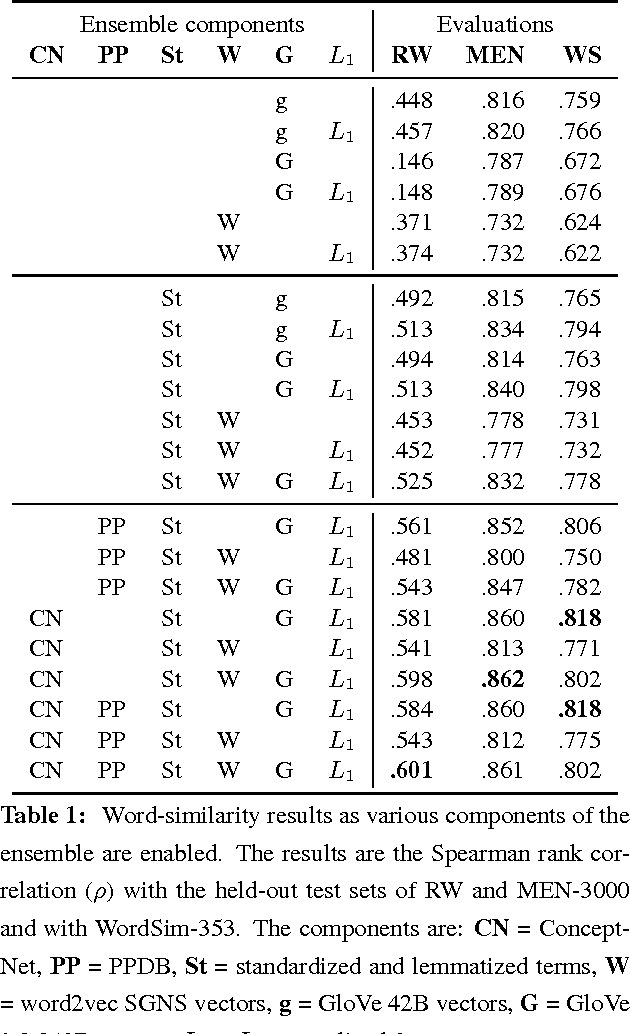
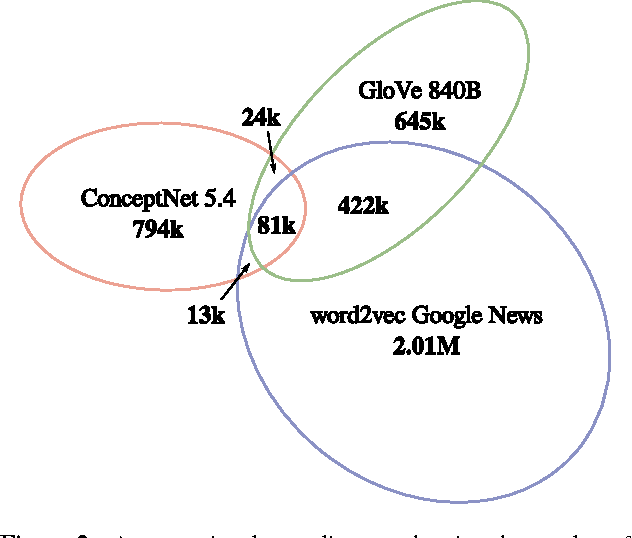
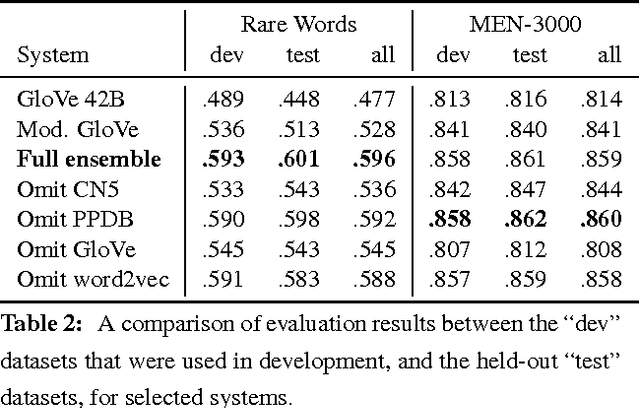
Abstract:A currently successful approach to computational semantics is to represent words as embeddings in a machine-learned vector space. We present an ensemble method that combines embeddings produced by GloVe (Pennington et al., 2014) and word2vec (Mikolov et al., 2013) with structured knowledge from the semantic networks ConceptNet (Speer and Havasi, 2012) and PPDB (Ganitkevitch et al., 2013), merging their information into a common representation with a large, multilingual vocabulary. The embeddings it produces achieve state-of-the-art performance on many word-similarity evaluations. Its score of $\rho = .596$ on an evaluation of rare words (Luong et al., 2013) is 16% higher than the previous best known system.
 Add to Chrome
Add to Chrome Add to Firefox
Add to Firefox Add to Edge
Add to Edge